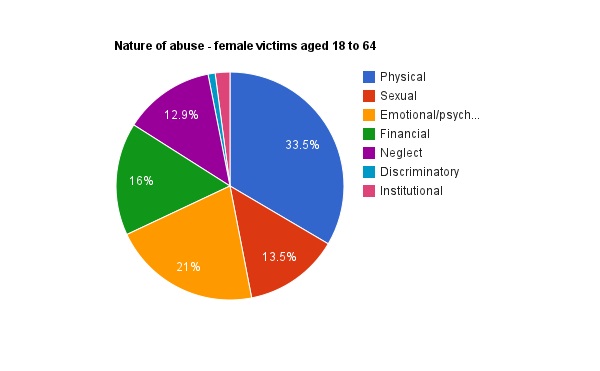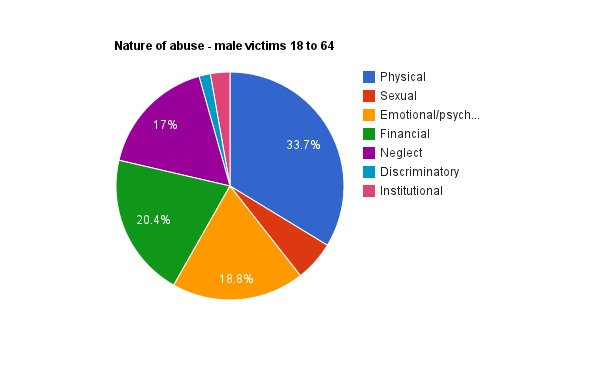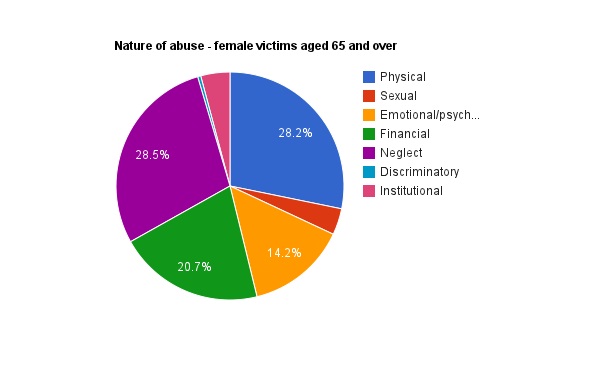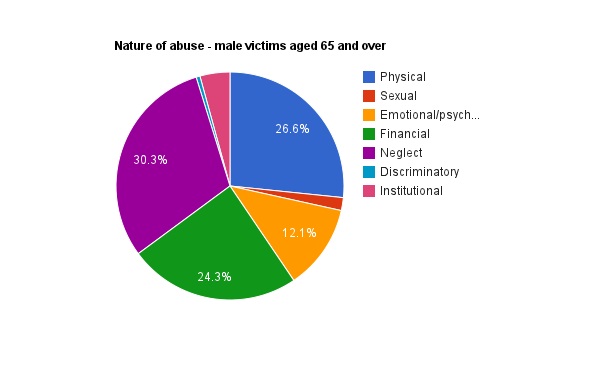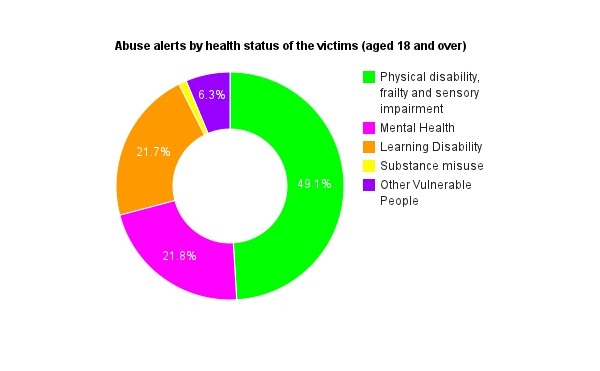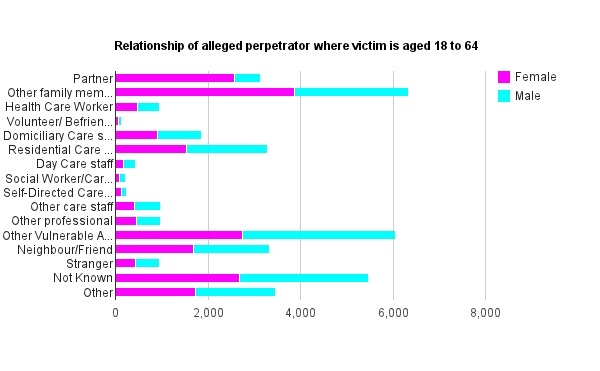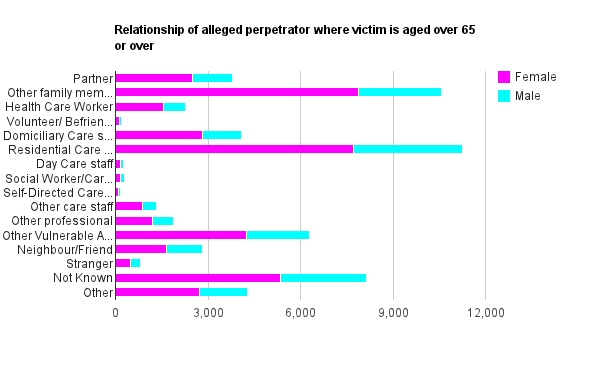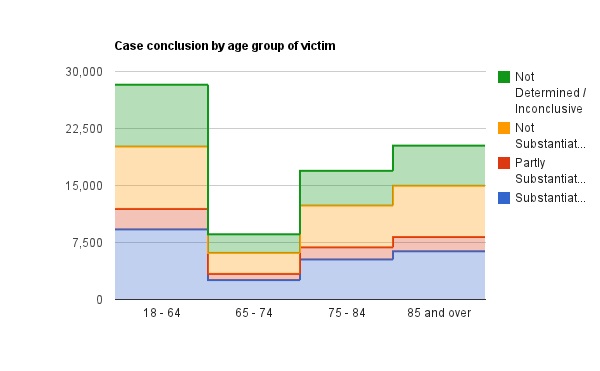
Last year’s Panorama investigation into abuse at Winterbourne View Care Home, shone a much-needed spotlight on the treatment of vulnerable people. It’s an issue never far from the headlines, particularly as care services continue to be squeezed.
Earlier this month a revealing collection of data was unleashed, collating alerts and referrals of abuse made during 2010/11 to adult social care safeguarding teams in England. And I thought I’d have a go at visualising them to bring forth some salient patterns.
The statistics it contains are ‘experimental’ – defined as ‘new official statistics undergoing evaluation’ in the UK Statistics Authority Code of Practice for Official Statistics.
Experimental they may be, but they’re still incredibly revealing.
In total over 90,000 cases of abuse were lodged in this one year. Irrespective of the age and gender of the victim, physical abuse was the most overwhelmingly common type. What I found most stark was the high proportion of financial abuse reports – which hovers around 20% across all the demographics I looked at. This is an issue which deserves further investigation.
The most vulnerable adults are those with physical disabilities. This could possibly reflect the fact they’re the group most likely to require assistance and care.
Another interesting observation is that, again, irrespective of gender and age, vulnerable adults are most susceptible to abuse from people they know.
Following on from this, most reports of abuse stem from the domestic environment.
So, what of the response to this deluge of abuse reports? Few cases end with a satisfactory resolution or conviction – in fact the most common outcome is the dispiritingly vague ‘no further action’.

